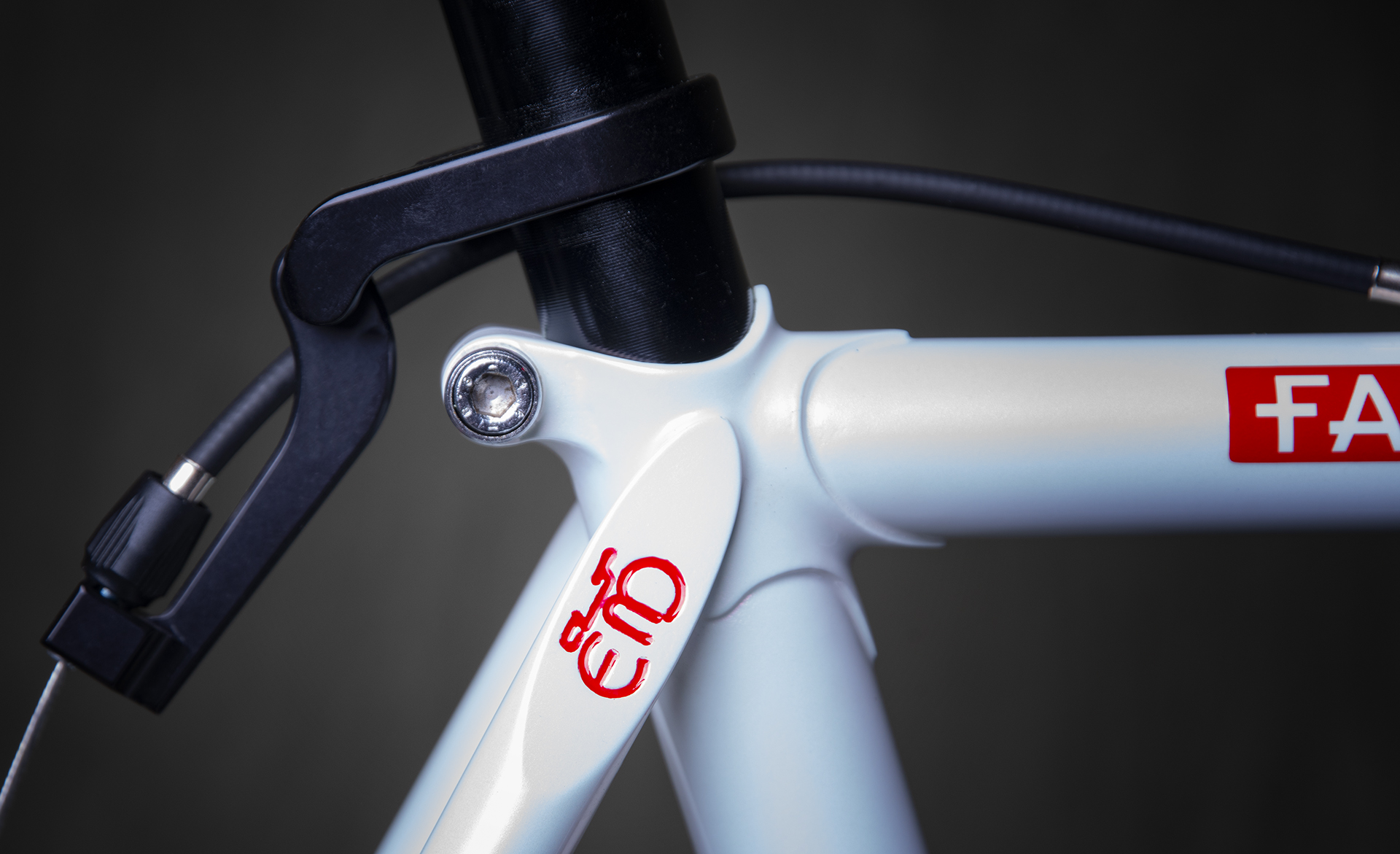Imagine it’s 1981 and you’re a Belgian that wants a custom cyclocross race frame. You go to see Eddy in Miese and you have him make a frame. You ask the EM factory to paint it with Flandria decals.
Or…you’re a sponsored Flandria rider but their production can’t make a frame that’s as good as an EM frame made for you by Ugo de Rosa. You commission a frame then have Flandria’s paint dept finish it in team colours.
Either of these scenarios could be true, and maybe neither of them. We don’t know!
What we do know is that this frame was purchased in 2017 from Europe via a random online seller and imported to Australia. It was sold as a Flandria steel road frame with a chromed fork and it was in pretty poor paint condition.
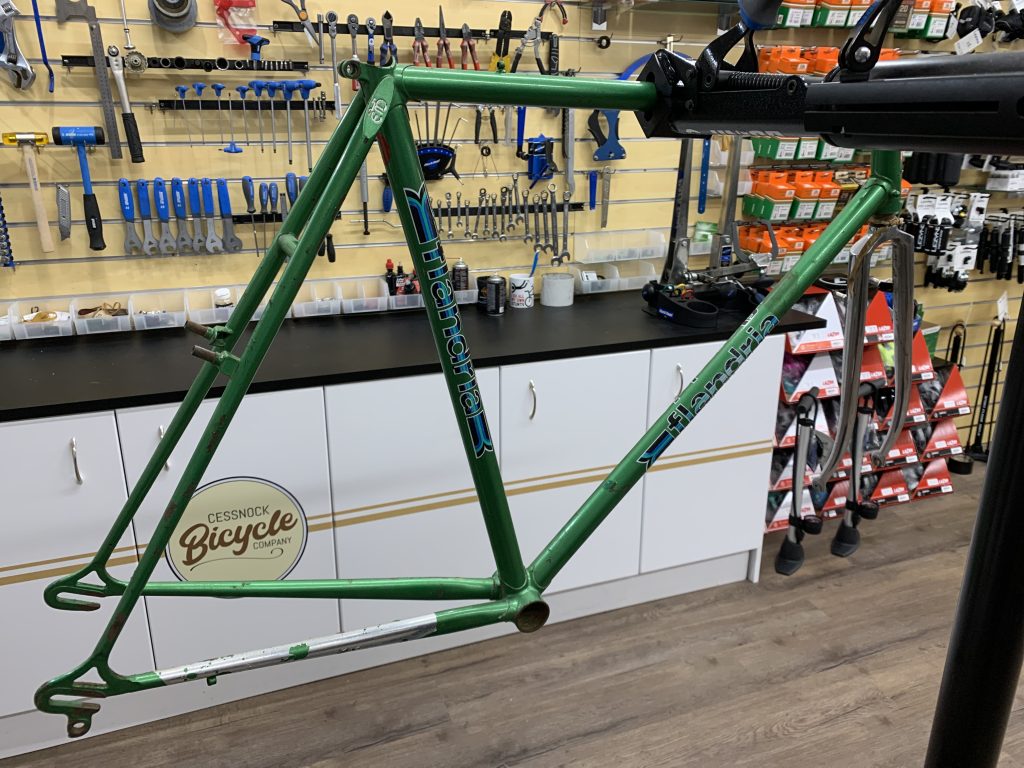
It’s a 1981 built frame, serial G-1680-E, the seat tube measures 55cm ctc. We think it’s probably Columbus SL but we can’t be sure.
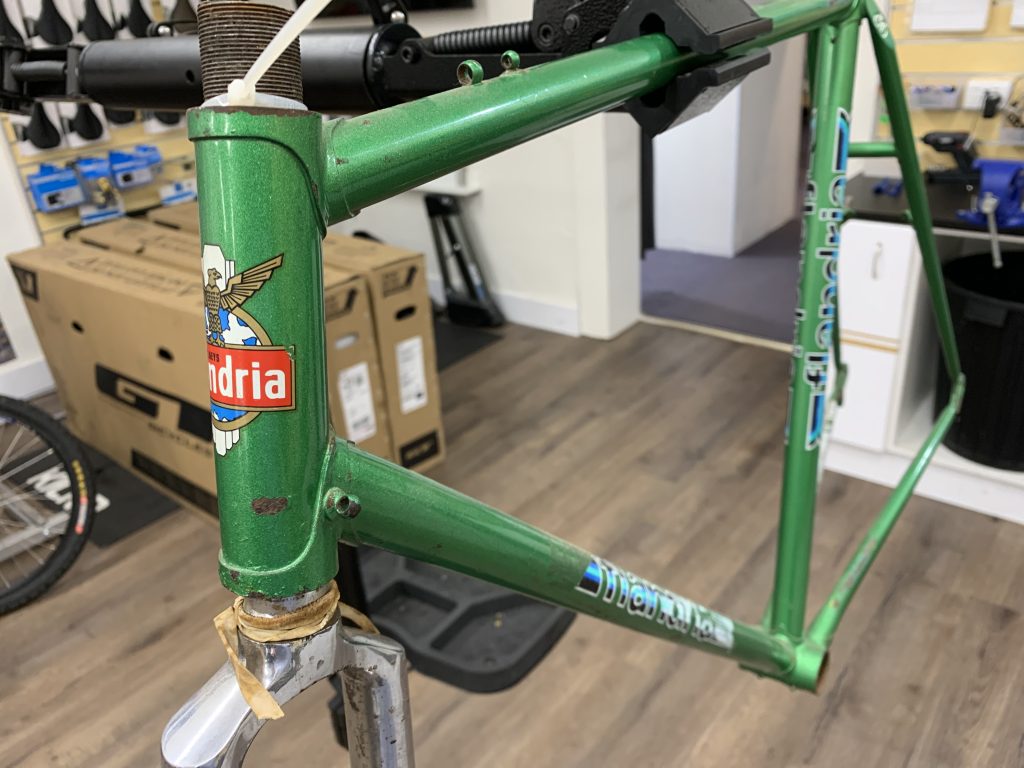
When we saw it advertised for sale there were several significant things immediately noticeable about this frame. The cable stops on the headtube are years before they became common, plus cable routing under the BB was rare for the early 80s. The rear dropouts are the longest we’ve ever seen, and the tyre spacing inside the crazy-long chainstays point towards oversize tyres.
The giveaway though? No bidon mounts. Who commissions a custom frame without bidons? Racers do.
When it came to restoration I considered a period-correct CX rebuild with cantilever brakes but the shifters were an issue. Would I mount some DT shifters up high on the steerer or use bar-end shifters? Neither solution is very pretty and a search for mounting options yielded even uglier results than I expected.
I thought about how popular Gravel bikes are now and considered a 1×11 solution, but what I decided on was an endurance road setup that has future potential for bikepacking upgrades.
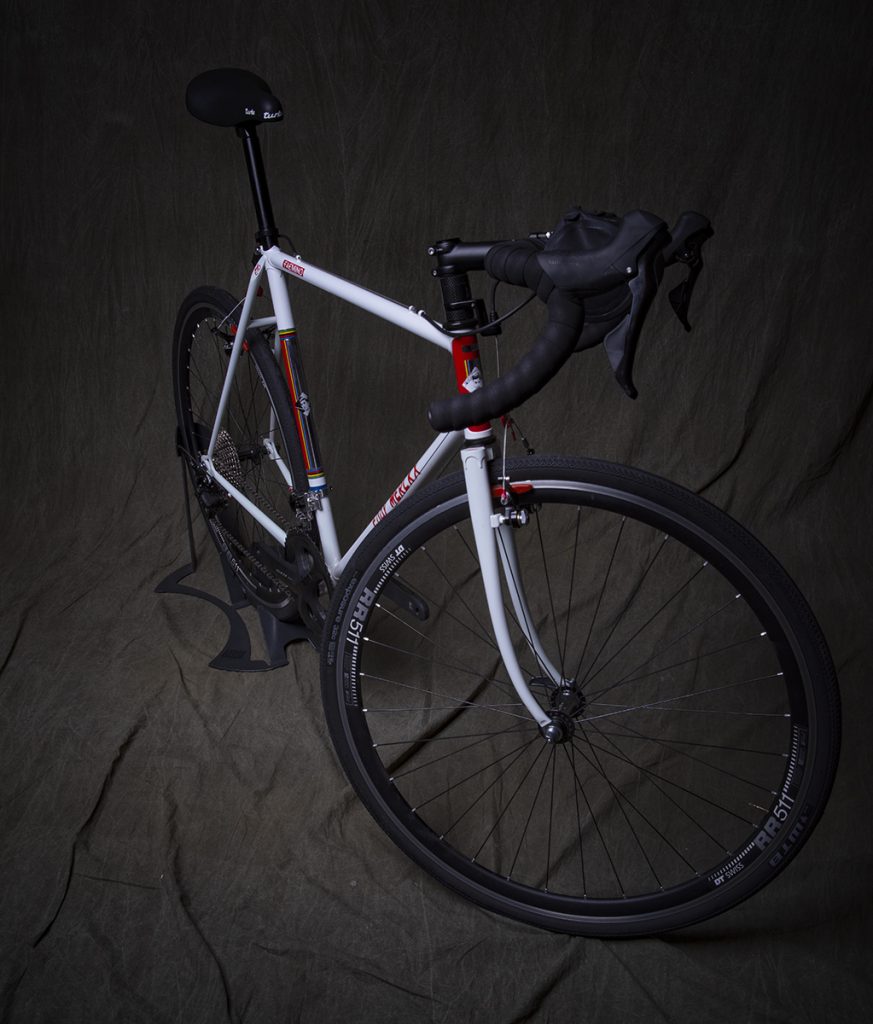
Once the decision was made, I went looking for a pair of ’81 EM forks. These flat-crown forks were pretty expensive to source and when they turned up the thread was damaged beyond use after a botched shortening job. We sent them to Paul Hillbrick to have a new Columbus steerer installed, and asked Paul to leave the steerer without a thread.
We also had Paul remove the brake mounts from the old forks and braze them onto the new forks in order for them to match front and rear.
One of the biggest innovations in bike fitting is the range of stem/bar options available with a threadless headset. This bike can now be custom fitted for a range of rider sizes and preferences, something that was very difficult to do in 1981.
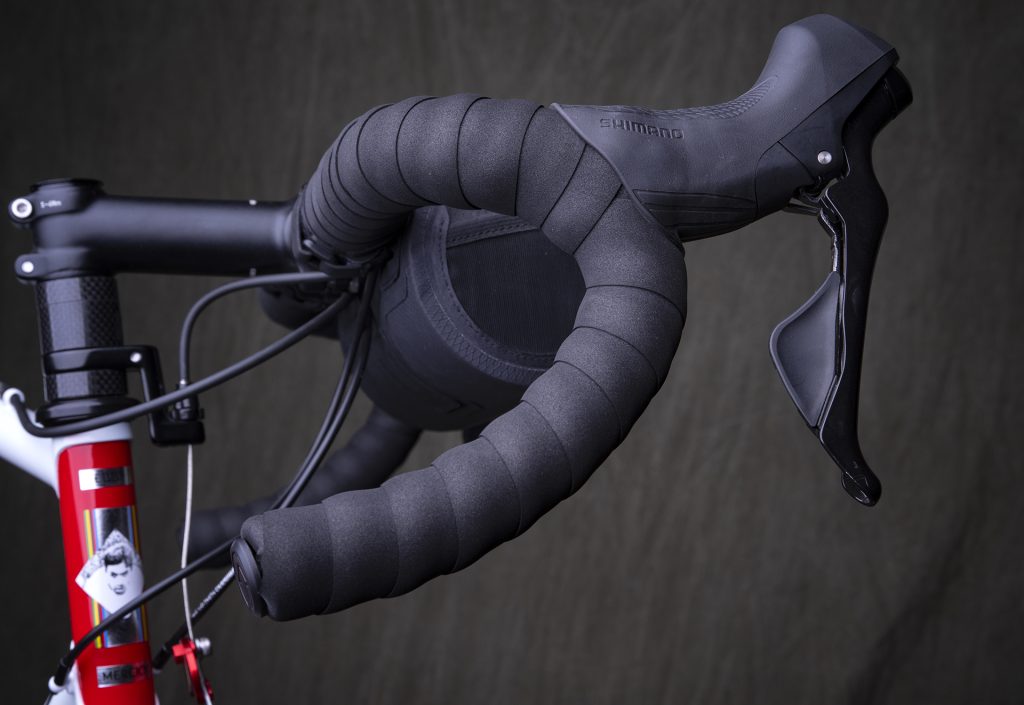
When deciding on brakes it was a no-brainer. These Paul Components Touring Cantis are CNC milled, superbly adjustable and use the excellent Kool Stop pads for quiet-but-efficient stopping power. I like to say that rim brakes are actually 620mm disc brakes and these brakes prove it.
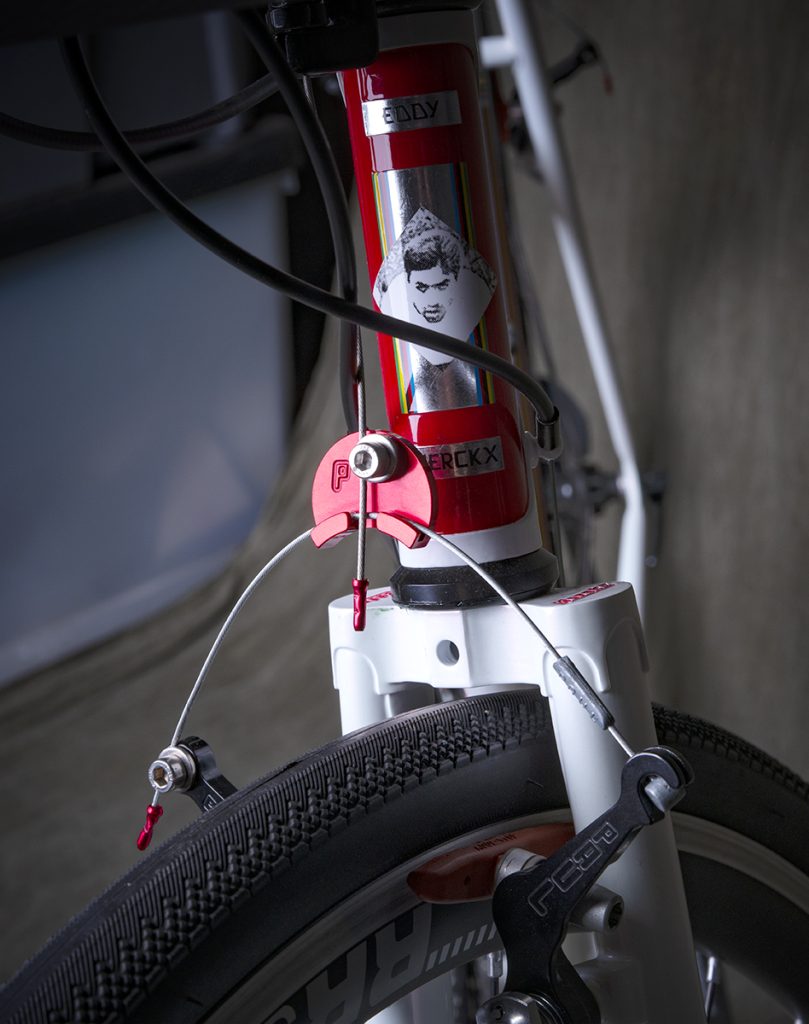
The groupset is Shimano 105 5800 2×11, we fitted it as a basic groupset that will work well but is easily upgraded once the bike is in the hands of its new owner. We didn’t add a braze-on front derailleur mount, there’s a clamp-on FD lightly mounted on the downtube.
The wheels however…
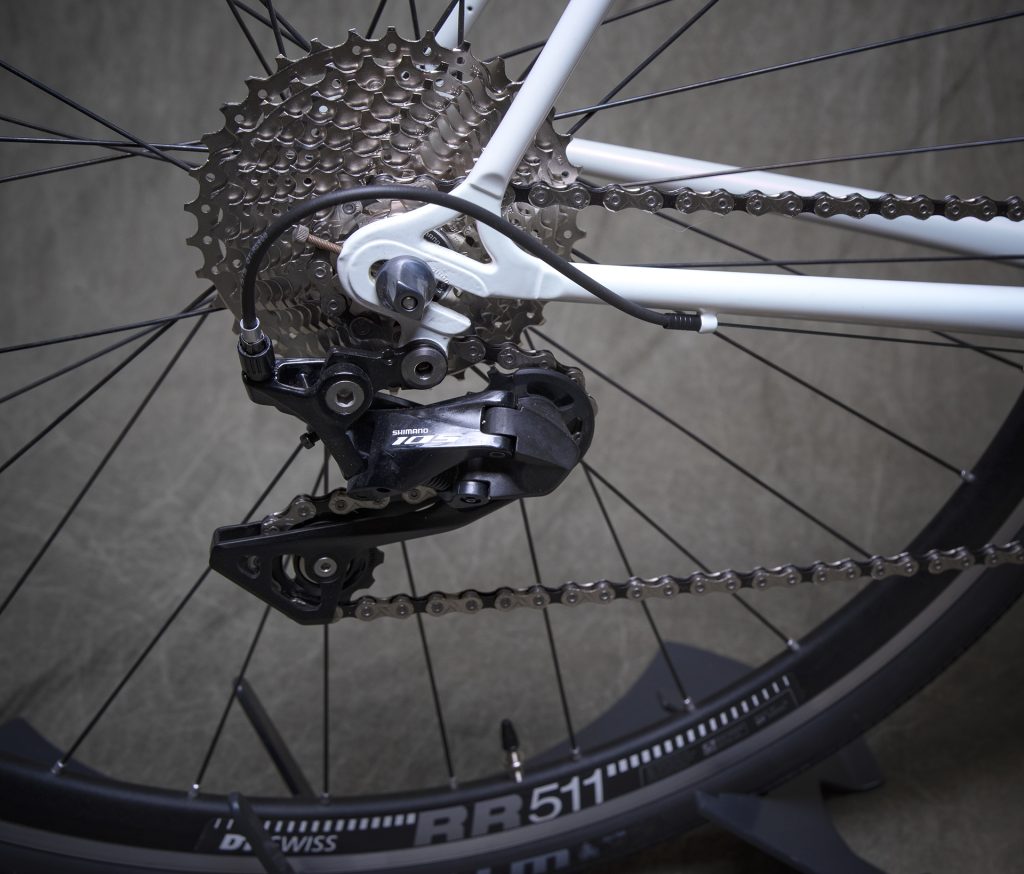
These wheels were built to last forever: DT Swiss RR511 rims with DTS competition spokes on Dura-Ace 9100 hubs. I love a great wheel set and the are the best.
As always, the paint was done by Star Enamellers with a ’69 Faema decal set by Cyclomondo.
The white enamel is overcoated with a red pearl which complements the red decal set.
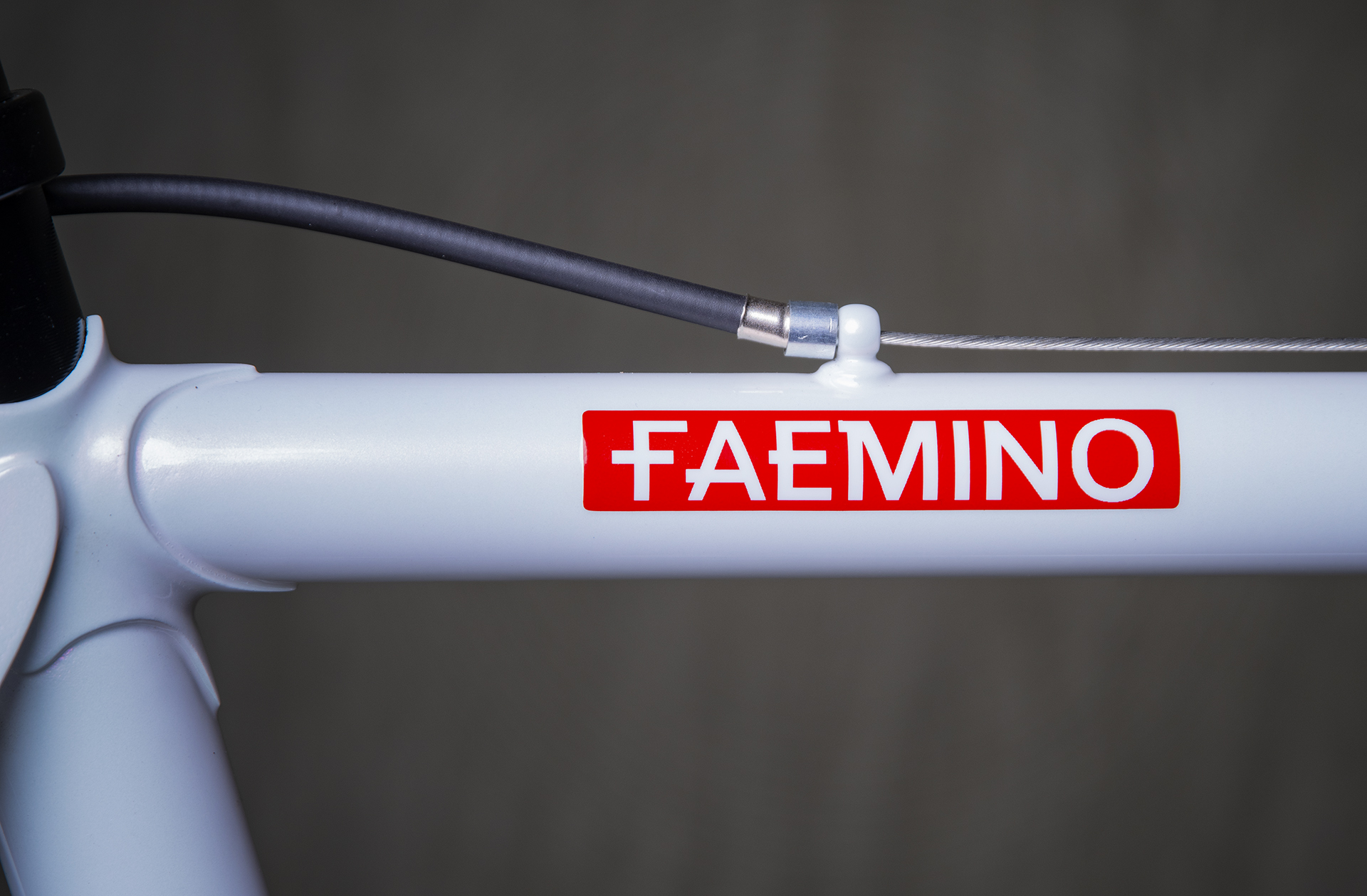
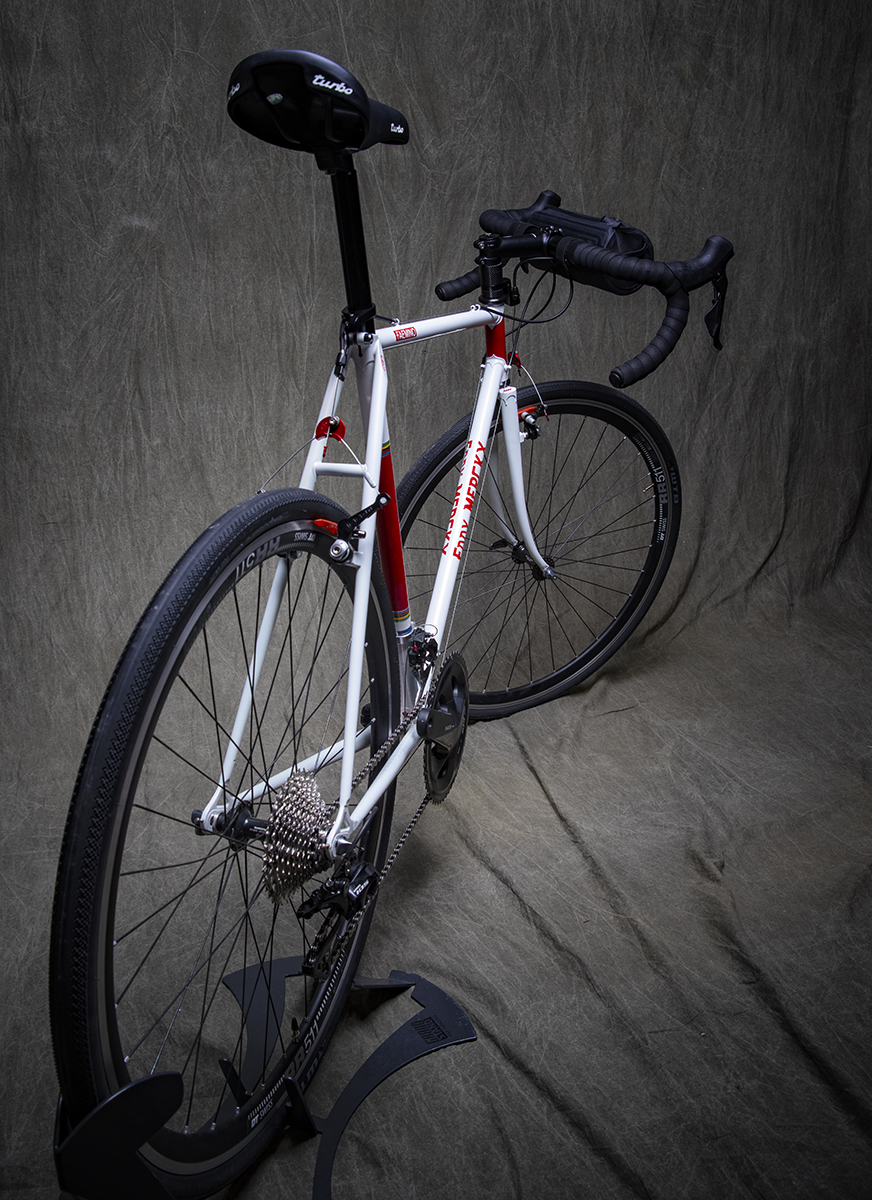
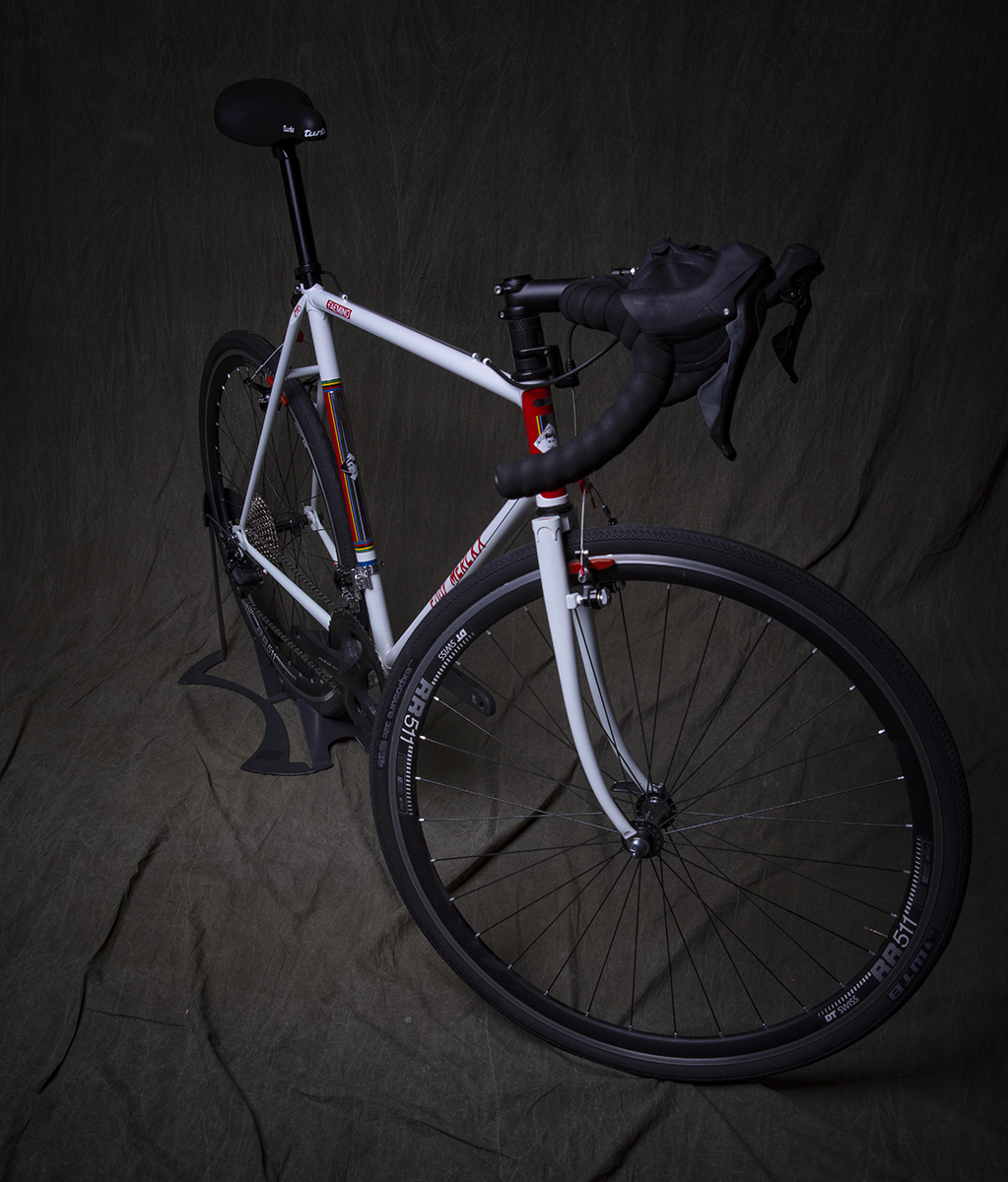
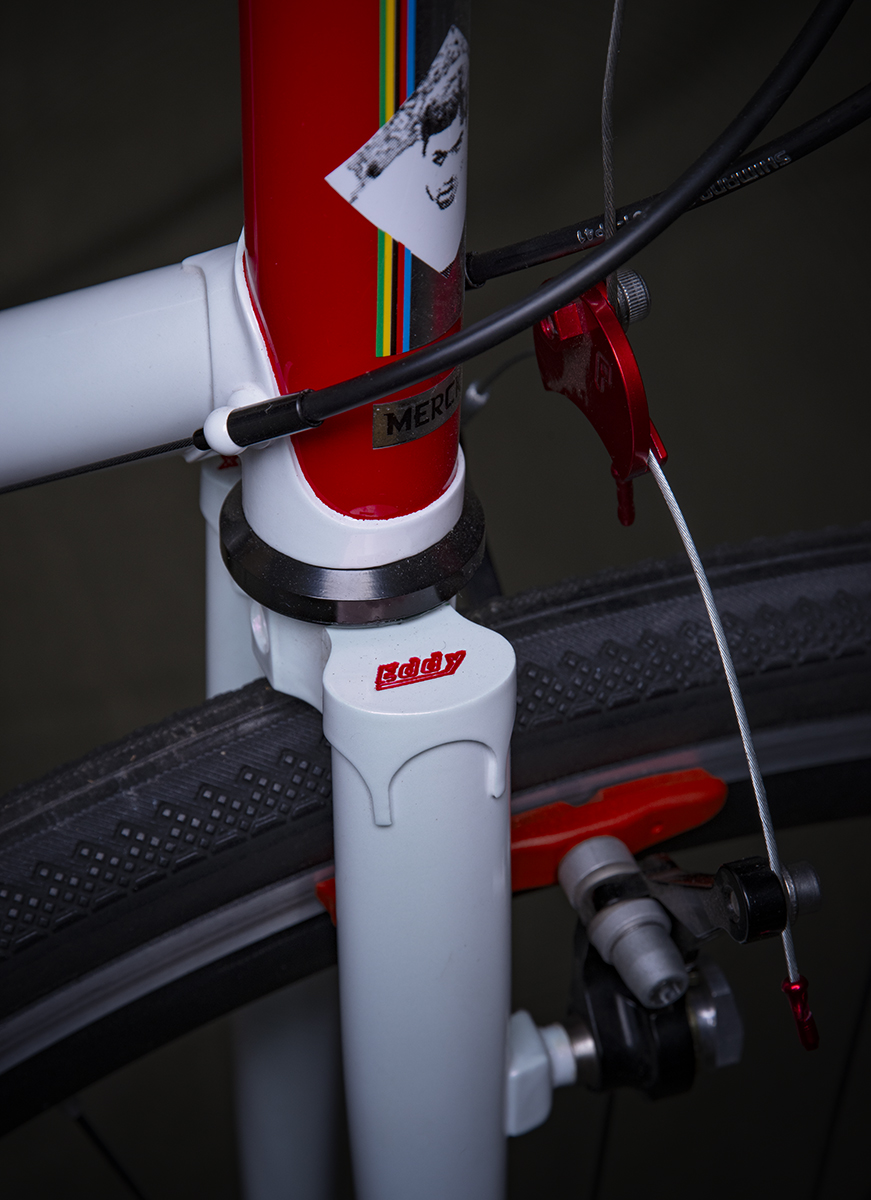
The bike is for sale here and is on display in our store. Please call ahead for a viewing.

